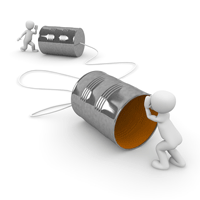Stop Blocking Your Apps' Success: 5 Ways to Unleash Their Brilliance

Aygun Suleymanova, Telerik
Mobile apps are launched every day, yet 80 percent of them are deleted almost immediately. Enterprise apps that take months to develop are ignored by staff once deployed. On the other hand, some apps thrive, build tons of followers and become the lifeblood of organizational efficiency.
What category do your apps fall into? Are they the ones that are ignored and deleted, or do they hypnotize and delight your users?
The secrets to developing great mobile experiences are not really so secret. Ensuring your app is the diamond in the rough requires a laser-sharp focus on the user and early user involvement, followed by collaboration and thorough testing. Here are five ways to ensure your app avoids the trash bin of irrelevance.
1. "Cool" Doesn't Cut It
A pretty UI only goes so far. To create a killer app, figure out how it will be useful to your user. If the app is tailored to the enterprise, understand completely what use case or cases it improves.
For example, if you're extending an app to mobile, it's important to determine which parts of the app users will leverage on their smartphones and why. In the case of a CRM app, a sales person may be meeting with a client off-site, and need to run a demo or provide product information. If she can't use her phone to complete those tasks, then the mobile app is useless. To provide the desired experience, you have to understand the user requirements and workflow before you set out to design it.
2. Give Users a Voice
Don't get so excited about development that you neglect to incorporate user feedback along the way. Users need a voice, so involve them throughout the development process to ensure your app does what you want it to do.
The best approach is to develop in iterations-"Lean" development-which enables you to collect user feedback in real-time. Releasing small, incremental variations to the user base makes you agile enough to pivot development to respond to and address shortcomings if your app isn't meeting user needs. The Lean methodology grew out of the pioneering production system at Toyota, and was gradually applied to software development in the early 2000s. Lean is another way to aggressively minimize waste, have tight feedback loops and apply other principles of agile development.
Tools are available to help you collect actionable feedback in a Lean development environment. For example, new tools enable users to shake a phone while using the app to bring up a feedback mechanism. The user can then provide instant feedback, and their comments flow seamlessly into the development environment-where they're immediately actionable.
3. Collaborate, Collaborate, Collaborate!
For mobile, you can't simply develop in an assembly line; collaboration between developers and designers is essential. With new prototyping tools, designers can create high-fidelity interactive prototypes that enable developers to log in and add notes, discuss the viability of features and understand user requirements prior to coding. Some tools even enable designers to export their designs as development code, giving developers a head start so they're not coding from scratch. Designers can pre-code styles, forms and buttons to give developers a better idea of the desired end product. Without such collaborative tools, time is wasted as developers struggle to understand and bring the designer's vision to life.
4. Use Data to Make Meaningful Improvements
If you don't know how your app is faring, it's impossible to fix what's failing. Analytics provide feedback on how your users are getting to and using your app. They can be quite granular in their content, advising the development team on which features are most used most often and, conversely, which features are rarely used. Information about user behavior enables teams to make better, more informed roadmap decisions.
Analytics can also provide valuable insight into your users' environment, so you have the information you need to enhance features. Remember, the analytics you track should always reflect your ultimate goal-engaging people, making transactions, delivering information or whatever other wonders your killer app will achieve.
5. Testing Reigns Supreme
Many developers work in such fast-paced environments, focused on coding and shipping, that testing is the first thing to be omitted. However, bugs are the biggest reason users delete apps, so it's important that you eliminate them before the complaints start rolling in. To minimize post-production bugs, involve testers from the get-go.
Unfortunately, the surface for mobile testing hasn't even been scratched, and the lack of tools, skills and time contribute to users failing to adopt apps after painstaking production. New tools enable you to collect your bug reports directly from users-they flow seamlessly into your development dashboard, and you can queue them up and include them in your issue list for immediate action. This enables testing to be ongoing, even after publishing, so you can continue improving your product to meet evolving user requirements.
With more than 10 billion mobile devices shipped in 2014, imagine how many apps will be launched in 2015. If you want your app to be one of the apps users adopt, love and retain on their devices, you must create an exceptional mobile experience that meets their needs-and that starts, and ends, with keeping your users front of mind.
Aygun Suleymanova is the Head of Platform Product Marketing at Telerik.

Subscribe to Our Newsletter!
Latest in Mobile Marketing










